On the morning of December 22, the delegation was warmly received by Mr. Masahiko Ishibashi, head of the Ministry of Industry and Labor, and Mr. Hiroyuki Miyahara, Deputy Minister of Regional Communications of Saga Prefecture, who expressed high praise for the museum's contribution to promoting cultural exchange between China and Japan and expectation to further strengthen cooperation with the Saga Prefecture.
.JPG)
After the meeting with the government, the delegation arrived at Kouransha, a local business that provides Arita ware products for Japan's imperial palace, and met with owner Yuuji Fukawa.
.JPG)
Then, the delegation had a business lunch with representatives of local ceramic associations, including Mr. Gen Harada, president of the Saga Prefecture Ceramics Industry Association, and Mr. Nagamasa Kihara, president of the Hizen Ceramics Commercial and Industrial Association.
In the afternoon, the delegation visited two of Japan's Living National Treasures. "Living National Treasure" is the title of the highest level in Japan's arts and crafts field – only 49 living artists have been awarded this title.
Mr. Manji Inoue, aged 87, hosted the delegation and had a warm conversation for over an hour, during which he mentioned that he had visited Shanghai 40 years ago and were amazed by the city. Mr. Inoue expressed his strong wish to visit Shanghai again through cooperation with the museum.
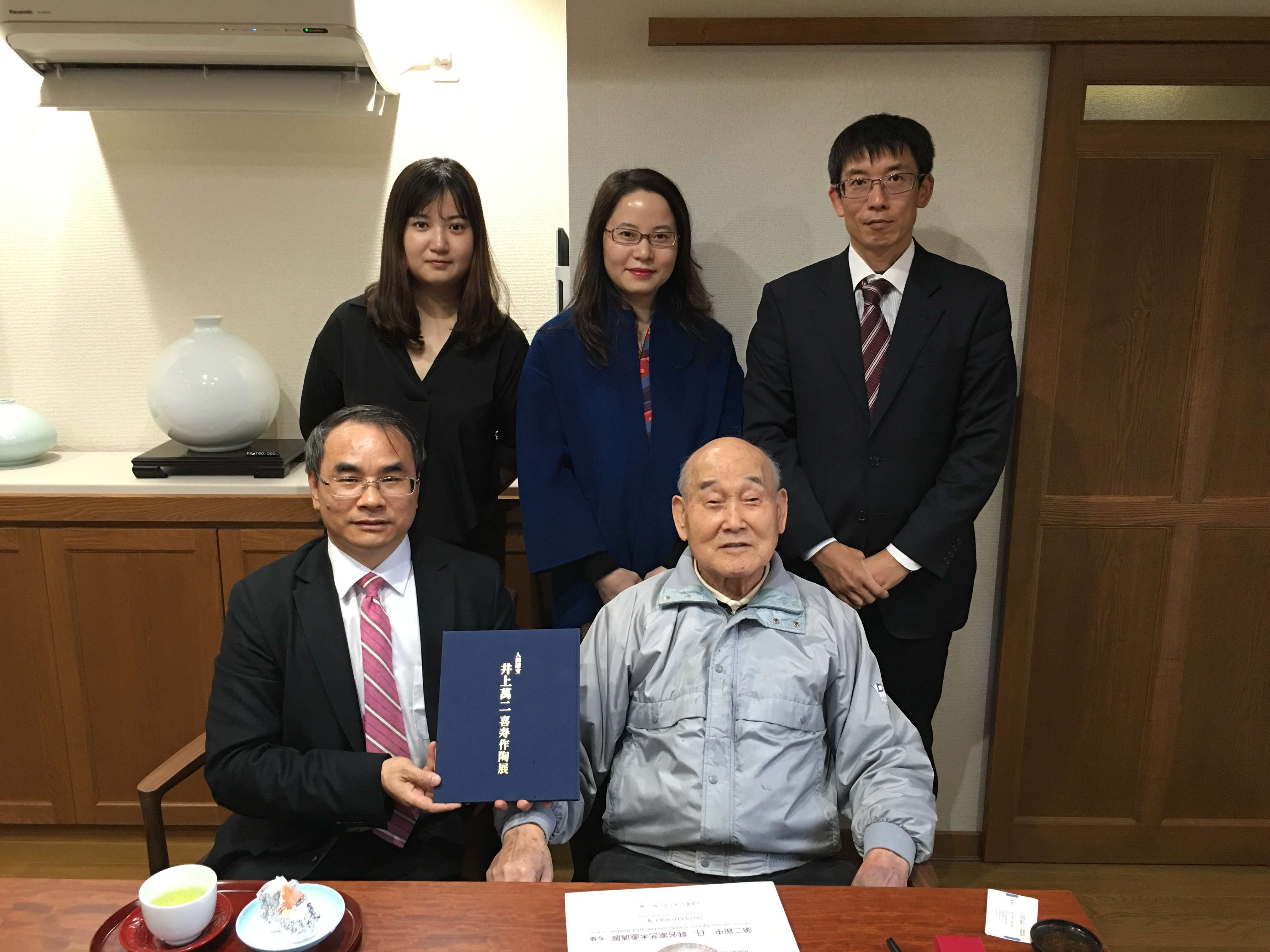
Known as the No. 1 white porcelain artist in Japan, Mr. Inoue told the delegation the reason for his persistence in making white porcelain: "The most beautiful woman does not need any makeup; what I pursue is such extreme beauty of nature."
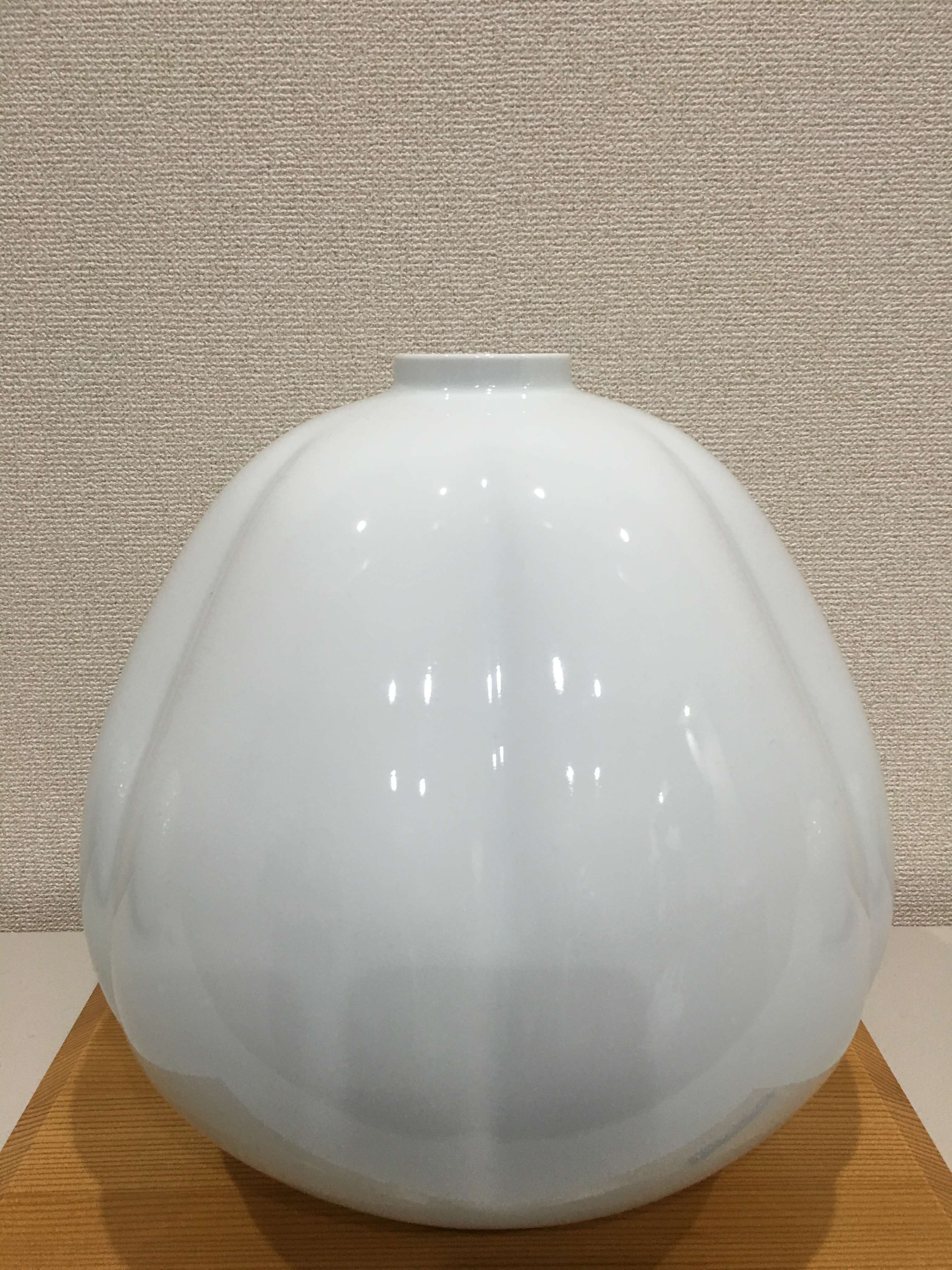
Afterward, the delegation visited the kiln of Imaizumi Imaemon and was welcomed by Living National Treasure, the 14th generation of Imaizumi Imaemon, who came all the way from Tokyo that day to meet the delegation. As Japan's youngest Living National Treasure in arts and crafts, Mr. Imaizumi expressed strong interest in cooperation with the museum. Never having visited China, he wished that Shanghai Art Collection Museum will be the first step in China.

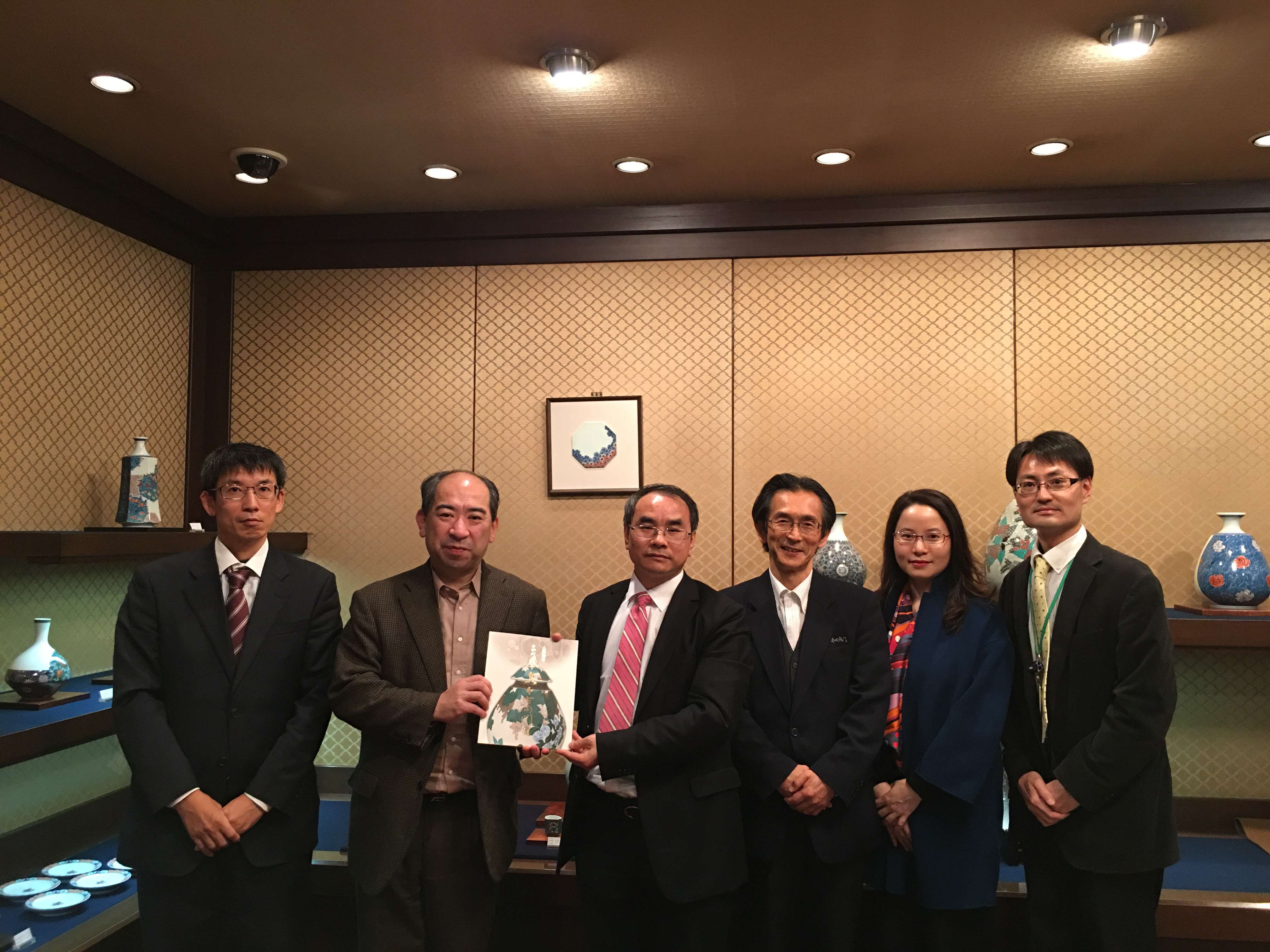
The next morning, the delegation visited the Saga Prefectural Kyushu Ceramics Museum and Arita Ceramics Museum with the company of related representatives, gaining a more thorough understanding of the history of ceramics in Saga Prefecture.

.JPG)
After the visit, the delegation went to the birthplace of Arita ware.
As a unique category of ceramics in Japan, Arita ware is different from common porcelain in that all works are made from pottery stone and the artistic style has a strong reference from painted porcelain in China. Local pottery stone were first discovered by Korean potter Yi Sam-pyeong.
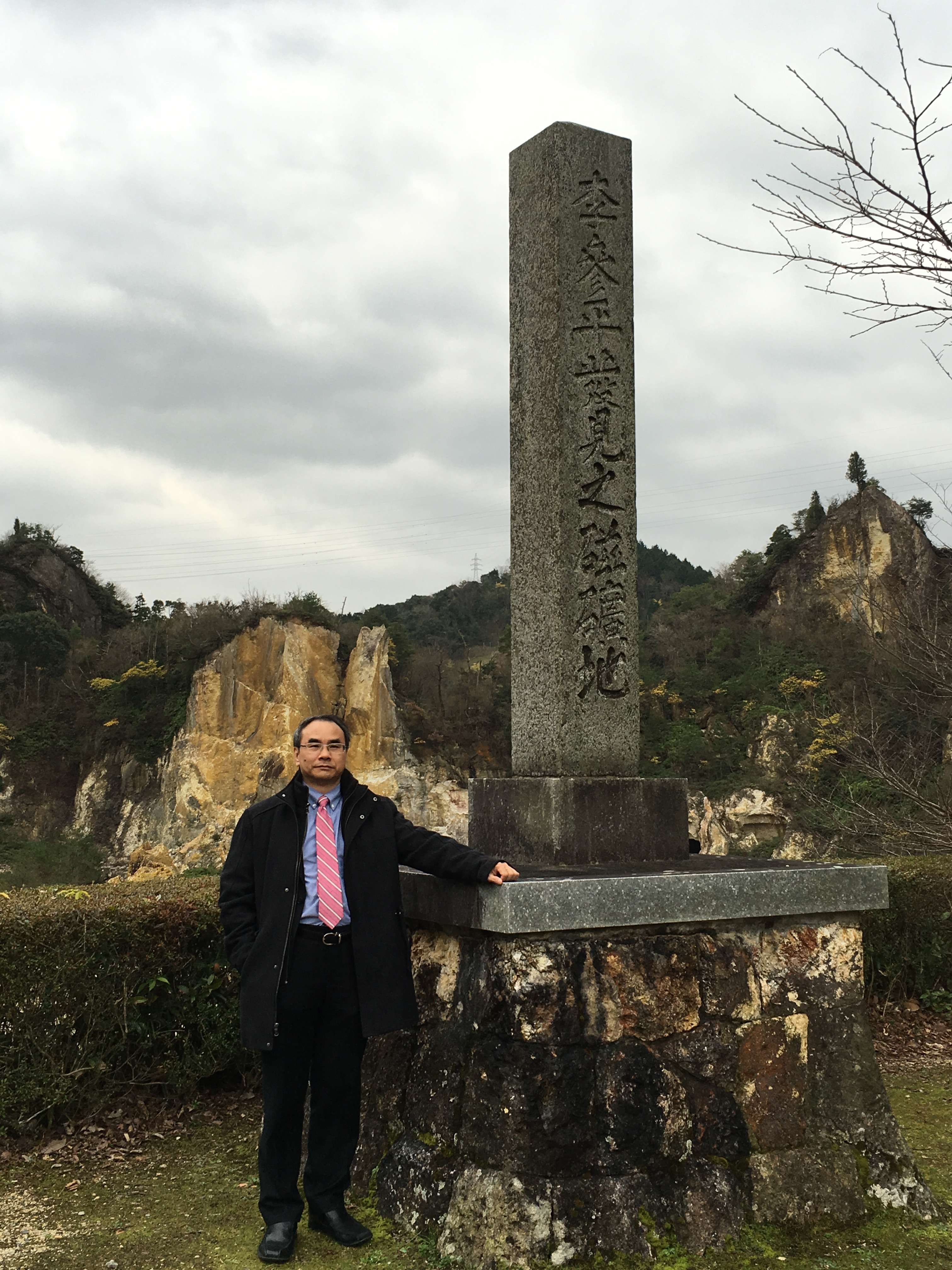
In the afternoon, the delegation visited the historical Ogawa-uchiyama in Imari.
Located in Imari, Saga, Ogawa-uchiyama is famous for the production of Nabeshima ware. Works produced in the area could only be used by local aristocrats or the imperial family in history. Now it has also become a well-known cultural tourist spot for its beautiful scenery.
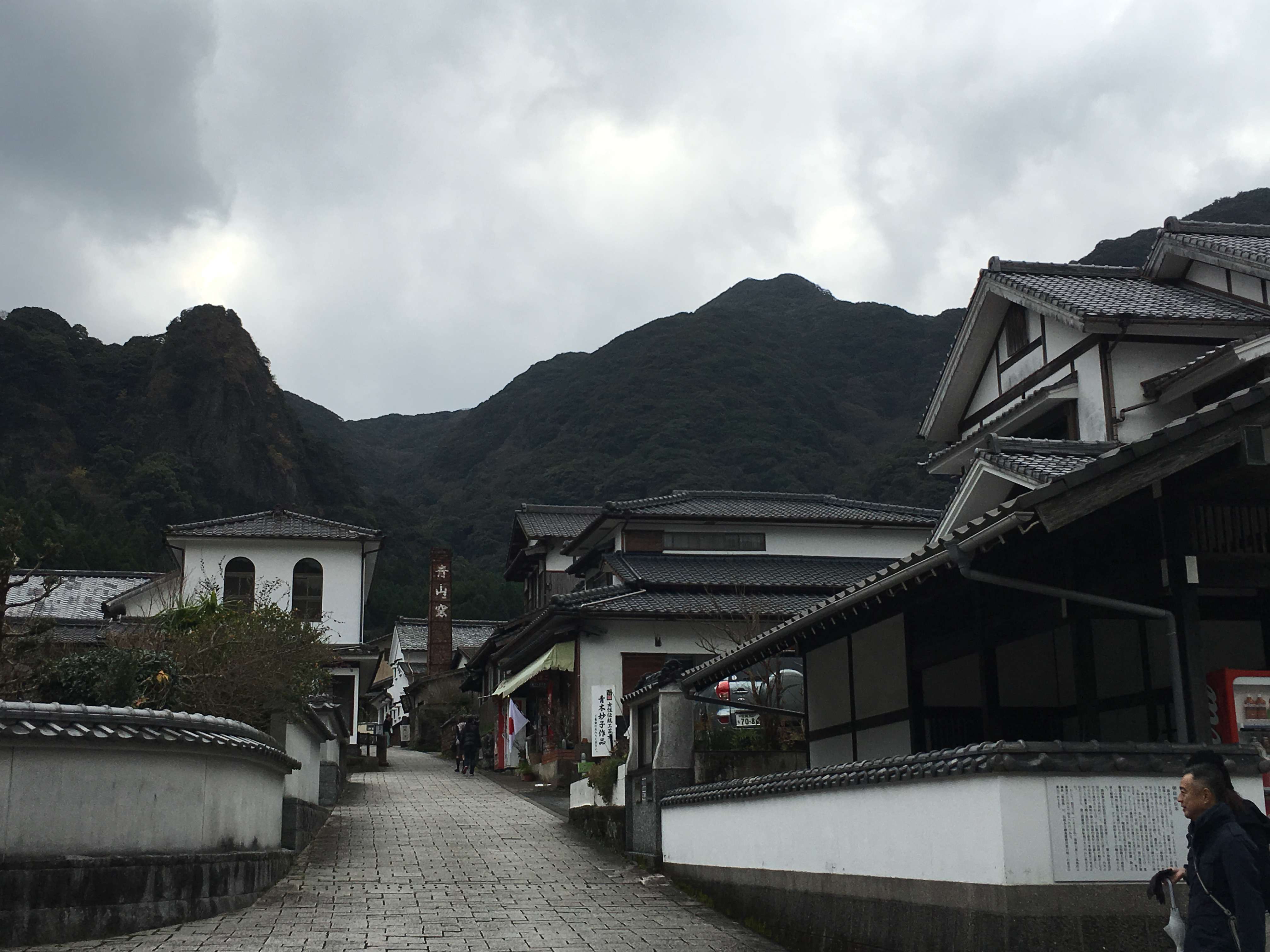
During the short 4-day visit, the delegation had deep exchanges with local artists, government officials and representatives from various organizations, who strongly expect that cooperation with Shanghai Art Collection Museum will result in mutual benefit through the combination of culture and business.